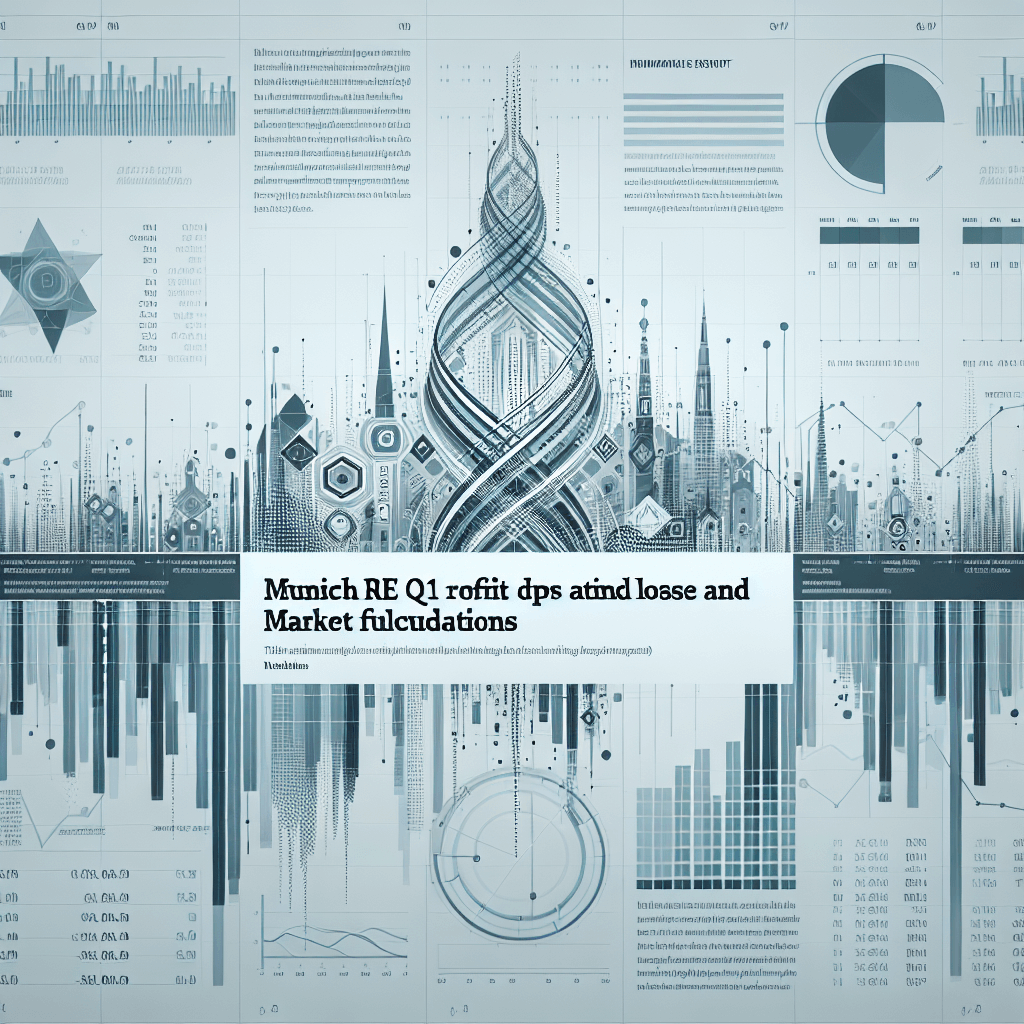Munich Re Q1 Profit Drops Amid Losses and Market Fluctuations

First-Quarter Highlights
Munich Re reported a consolidated net result of €1.09 billion for Q1 2025, down from €2.12 billion a year earlier. While the reinsurer remained profitable, earnings were weighed down by large natural catastrophe claims, currency effects and swings in global interest rates.
Key Drivers of the Earnings Decline
- Natural Catastrophes: The January wildfires in Los Angeles generated an estimated insured loss of up to $40 billion, translating into a €1.1 billion charge for Munich Re’s property-catastrophe portfolio.
- Investment Volatility: Net investment income fell to €1.32 billion (Q1 2024: €2.16 billion), reflecting mark-to-market losses on fixed-income positions amid ±75 bps swings in 10-year U.S. Treasury yields.
- Foreign Exchange: A weaker U.S. dollar versus the euro cost the group approximately €500 million in translation losses on its overseas operations.
Insurance Operations Performance
Gross written premiums from insurance contracts rose 5% year-on-year to €15.8 billion. Munich Re’s ERGO division accounted for one-third of this, with its international arm delivering strong growth:
- ERGO International revenue up 8.8%, driven by expanded small business lines.
- Entry into the U.S. SME market via the acquisition of Next Insurance in March 2025.
- Improved underwriting discipline in liability and cyber segments, with combined ratio held at 93.5%.
“This quarter underscores our resilience and the benefits of diversified risk management. We reaffirm our guidance of €6 billion net profit for 2025,” said Christoph Jurecka, CFO of Munich Re.
Technical Specifications of the Investment Portfolio
As of March 31, 2025, Munich Re’s investment portfolio was allocated as follows:
- 68% in investment-grade fixed income (duration: 5.2 years)
- 12% in equities and alternative assets (hedged to reduce volatility)
- 15% in real estate and infrastructure debt (yield: 4.1% p.a.)
- 5% in cash and money market instruments
Risk metrics:
- Value-at-Risk (VaR) at 99% confidence over 10 days: €2.5 billion
- Solvency II ratio: 225% (up from 218% at year-end 2024)
Capital Markets Impact
During the quarter, rising yields led to unrealised losses in the bond portfolio. The group employs duration hedges using interest rate swaps, which partially mitigated mark-to-market swings but could not fully offset negative carry costs of approximately €120 million.
Deeper Analysis: Risk Management and Portfolio Diversification
Munich Re’s risk management framework combines economic capital modelling with scenario analysis. Key features include:
- Catastrophe Risk Pools: Securitised catastrophe bonds covering up to $1 billion of losses per event.
- Retrocession Strategies: Layered reinsurance to cap the group’s peak exposures.
- Dynamic Asset Allocation: Monthly rebalancing to maintain target durations and credit quality amid shifting yield curves.
Deeper Analysis: Reinsurance Market Trends
According to benchmarks from Guy Carpenter and Swiss Re Institute:
- Global reinsurance pricing increased on average 7% in Q1 2025, driven by property-catastrophe renewal cycles.
- Cyclicality persists in casualty lines; rate hikes of 3–5% observed in North America.
- Growth in climate-related parametric products, representing 4% of total reinsurance premium volume.
Expert Insights
Dr. Elena Fischer, Professor of Insurance Economics at the University of Cologne, comments: “Munich Re’s disciplined underwriting and robust capital buffers position it well to absorb near-term shocks, but investors should monitor interest rate path and inflation trends closely.”
Outlook and Guidance
Munich Re reiterated its full-year net profit forecast of €6 billion, assuming no further large-scale catastrophes and stable market conditions. The group plans to:
- Expand parametric insurance solutions for climate risk.
- Integrate Next Insurance’s digital SME platform to drive cross-sell opportunities.
- Maintain capital discipline by targeting a Solvency II ratio of 210–230%.